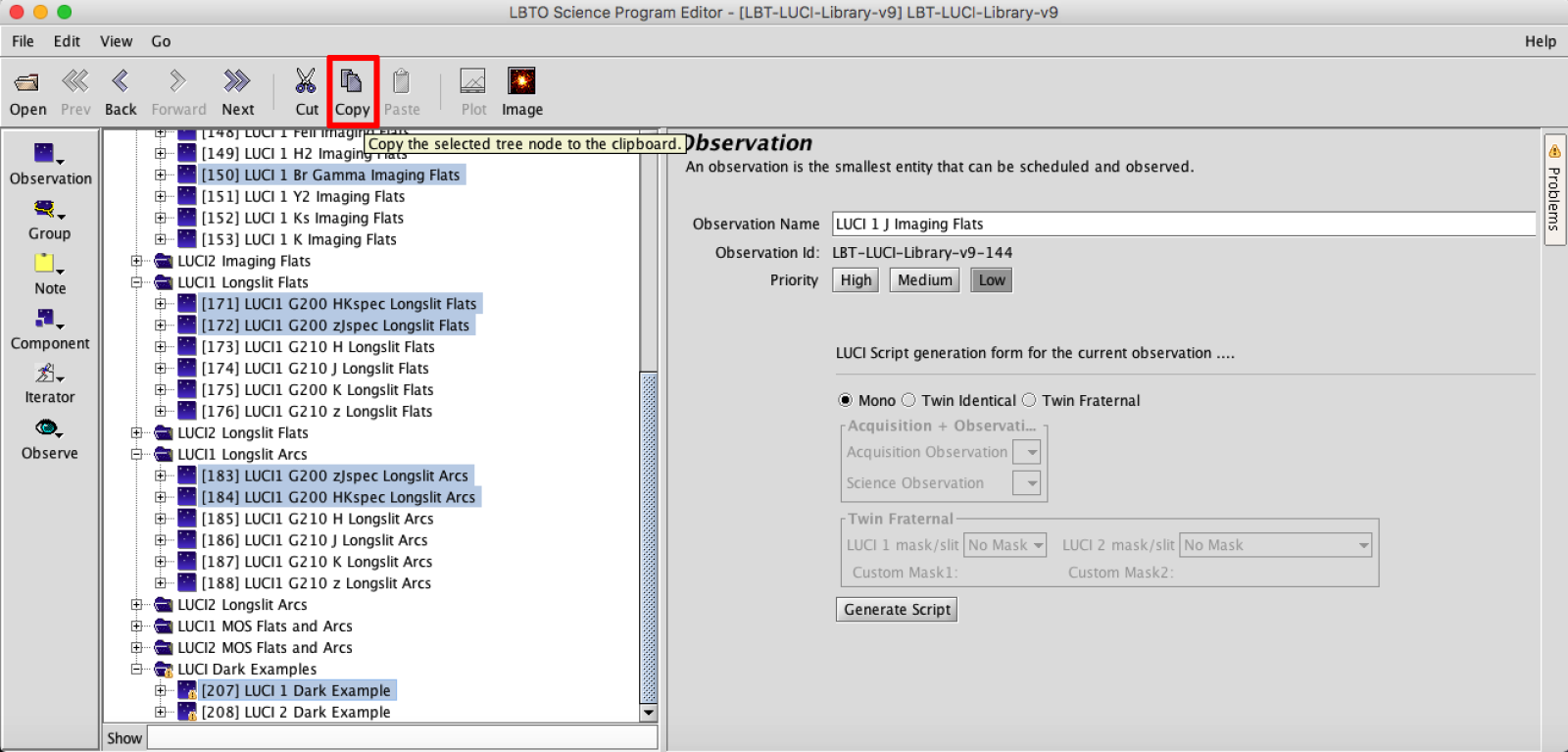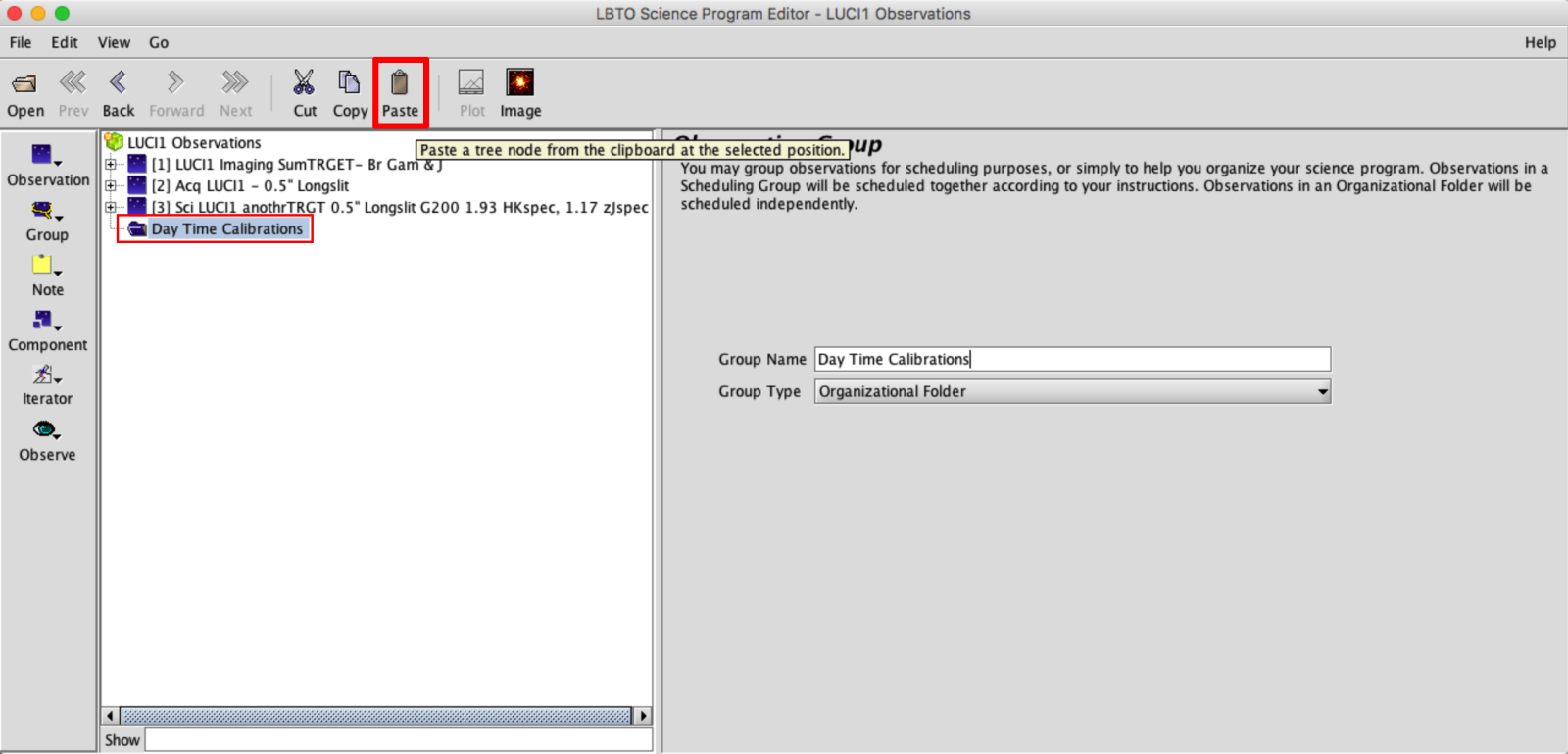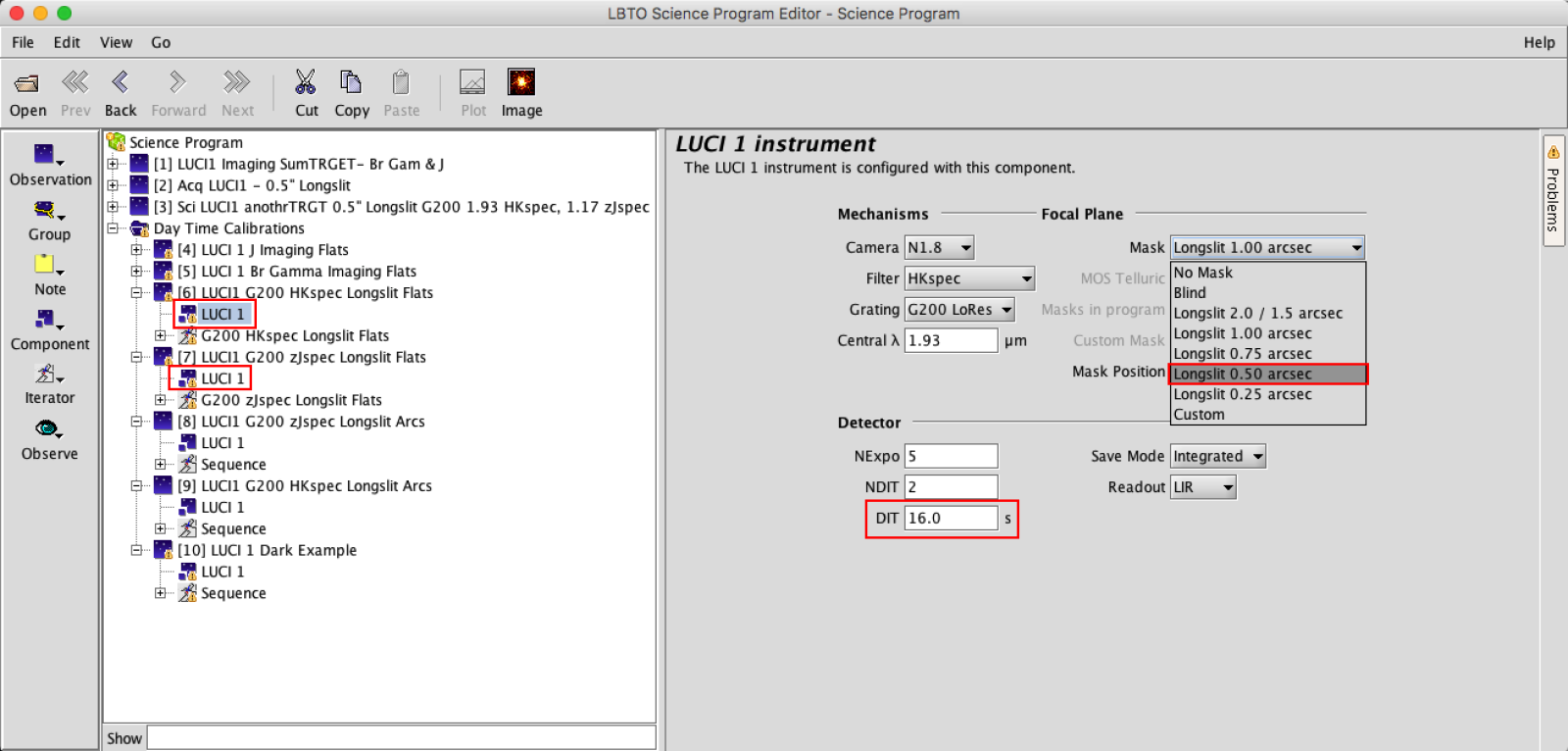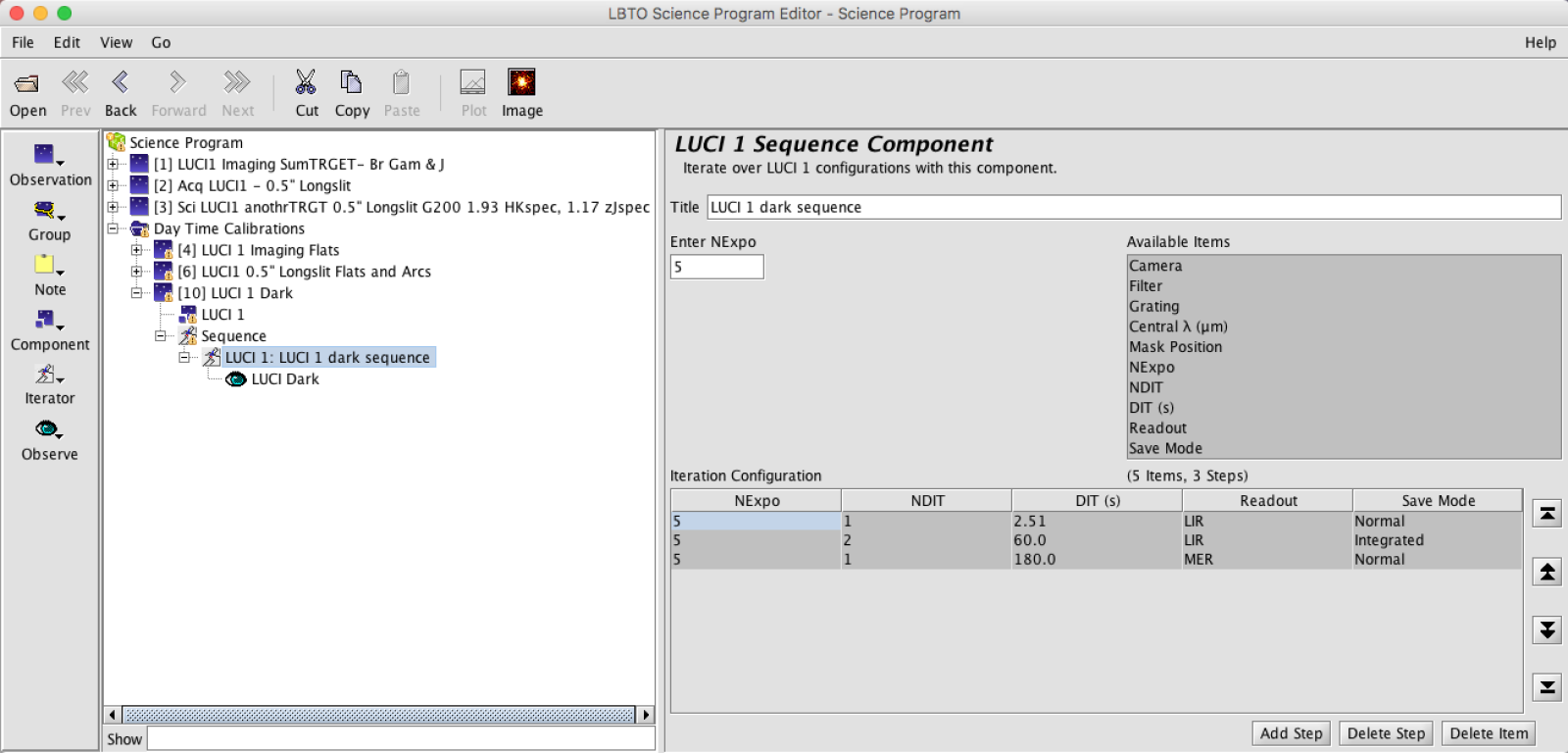7: Calibrations Example
Example 7: Setting up Internal Calibrations for LUCI observations
Details about LUCI calibrations are available on the LUCI Instrument Pages.
Expand the “Calibrations with Calibration Unit” Folder. This Folder contains templates for both LUCI1 and LUCI2 calibrations for standard configurations. Expand the folder(s) for the desired LUCI observation configuration. Because of slight differences between the LUCI1 and LUCI2 optics and calibrations units, the calibration times and configurations are slightly different.
Note daytime calibrations do not contain a “Target” element or “Observing Conditions”. If generating day time calibrations from scratch, these components can be ignored or deleted. Observations involving the flat and arc lamps have the lamp off exposures built in, so it is not necessary to expressly generate these. The lamp off is taken first followed by lamp on.
For this example we generate internal calibrations for a direct imaging program involving Br Gamma and J filters, and a long slit program with both the HKspec and zJspec in the standard central wavelength configuration for LUCI1.
When setting up calibrations, it is recommended to create a Calibration group for daytime calibrations in your Science Program to help organize the observations.
In the Library, expand relevant folders and highlight all relevant observations. For this case, we will expand the folders:
- LUCI1 Image Flats
- LUCI 1 LongSlit Flats
- LUCI 1 LongSlit Arcs
- LUCI Dark Examples
selecting the relevant observations.
Paste these observations into the DayTime Calibrations Folder you have just created in your science program.
There should be no need to edit the Imaging Flat Observations (exposure times and instrument configurations have been set and observations named appropriately).
The Longslit Flat observations may need to be edited depending on the slit width of science observation and central wavelength. The library contains the exposure times for the longslit flats with the 1.0″ slits and N1.8 Camera. Exposure times for other slit widths scale inversely by the ratio of the slit widths (1″ slits should need half the time of 0.5″ slits) and also inversely as the square of the ratio of pixel scales (so flats with the N3.75 camera should take 4 times as long as the equivalent flats through the N1.8 camera). If flats for other slits widths are desired, edit the Mask and DIT on the Instrument Element.
For this example we would like to take flats for the 0.5″. To convert the observation from the 1.0″ to the 0.5″ longslit, multiply the DIT by 2 and change the mask to the 0.5″ slit in the Instrument Element. Note that for the zJspec that would make the DIT 64 seconds. Rather than exposing for that long, we can adjust the lamp from the halo 2 to the halo 1 in the Observe Type Iterator and use the shorter exposure time (see the LUCI Calibration Exposure Times Page for details).
Arc exposure times should not need to be scaled. The exposure times provided in the OT were determined for the 0.5″ longslit with the N1.8 camera, but the exposure times for other slit widths with a given grating or camera are about the same. Arc exposure times do not need to be scaled.
With each of the calibrations listed as a separate observation above, each step would involve generating a separate script which can be unnecessarily tedious. We can combine these observations. When combining observations, it is recommended to limit scripts to one mask/FPU configuration per calibration script.
First for this example, we create an Imaging Flats script: N3.75 Camera, Mirror, no mask in use. Note: Imaging Flats with the Calibration Unit are not typically taken, sky flats are the recommended flat but these can be a necessary backup if twilight flats are not possible.
Select the starting filter, and this observation will become the base. In our case we will start our imaging flats with the J filter. Rename this from LUCI 1 J Imaging Flats to something more generic, perhaps LUCI1 Imaging Flats. Expand this observation fully, including the sequence. The next configuration we would like to take is the BrGamma direct imaging flats. Fully expand this observation. Drag the Sequence Iterator from the LUCI 1 Br Gamma Imaging Flats to the LUCI 1 Imaging Flats Sequence.
We have now a script of the Imaging Flats. The sequence below only shows the lamp on portion of the observation, but each observation item in the sequence starts with lamps off before the lamp on in the desired filter.
Repeat this process for the spectroscopic setup (N1.8 Camera, 0.5″ slit in the FPU, etc), with the HKspec and zJspec flats and arcs. Note that one wants to pick a sequence order that will minimize persistence effects, so do flats before arcs.
Delete empty observations along the way. Similarly to the Imaging flats, the sequence will not show the lamp off, but each observation item starts with lamps off followed by lamps on.
Sequences can have filter, grating, and even camera changes as long as the instrument configuration change is shown in the Sequence iterator. But it not recommended to have a MOS Mask change in an observation.
Lastly is the generation of the dark observation. Darks should be generated as serparate observations from science and other calibrations. The Darks are typically run in the afternoon after the detector has been left quiet for a while to minimize persistence effects. The instrument is normally configured the morning before, once observing concludes. Note the example in the library places the blind mask in the FPU, but to minimize FPU motions sometimes other masks are left in the FPU. Mask sure the mask setup in the Instrument Element in the observation matched the mask currently and/or desired in the FPU; the generated script will move the mask. The script will put the blind filters in place, put the mirror in, and set the camera to N1.8 regardless off what is set in the observation.












